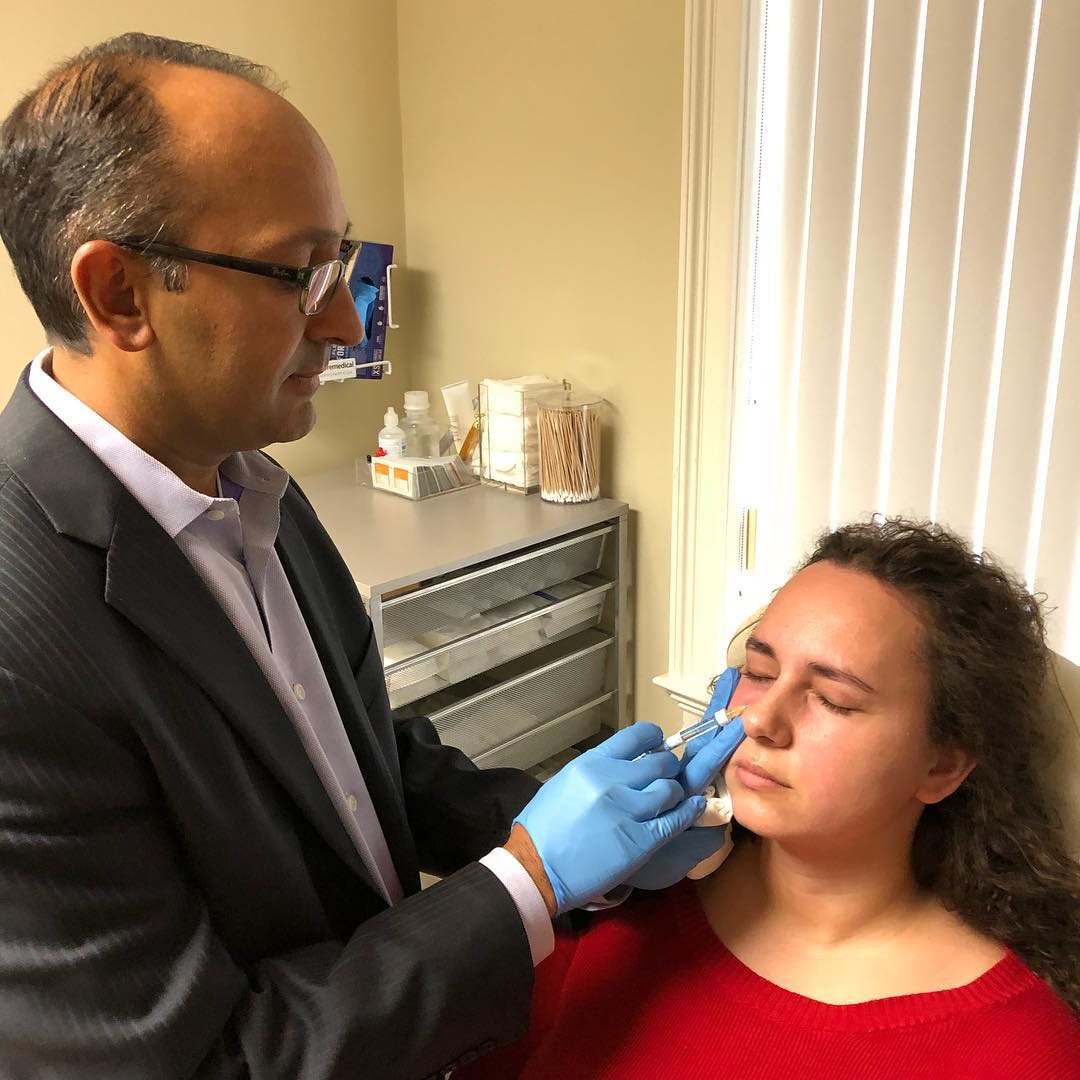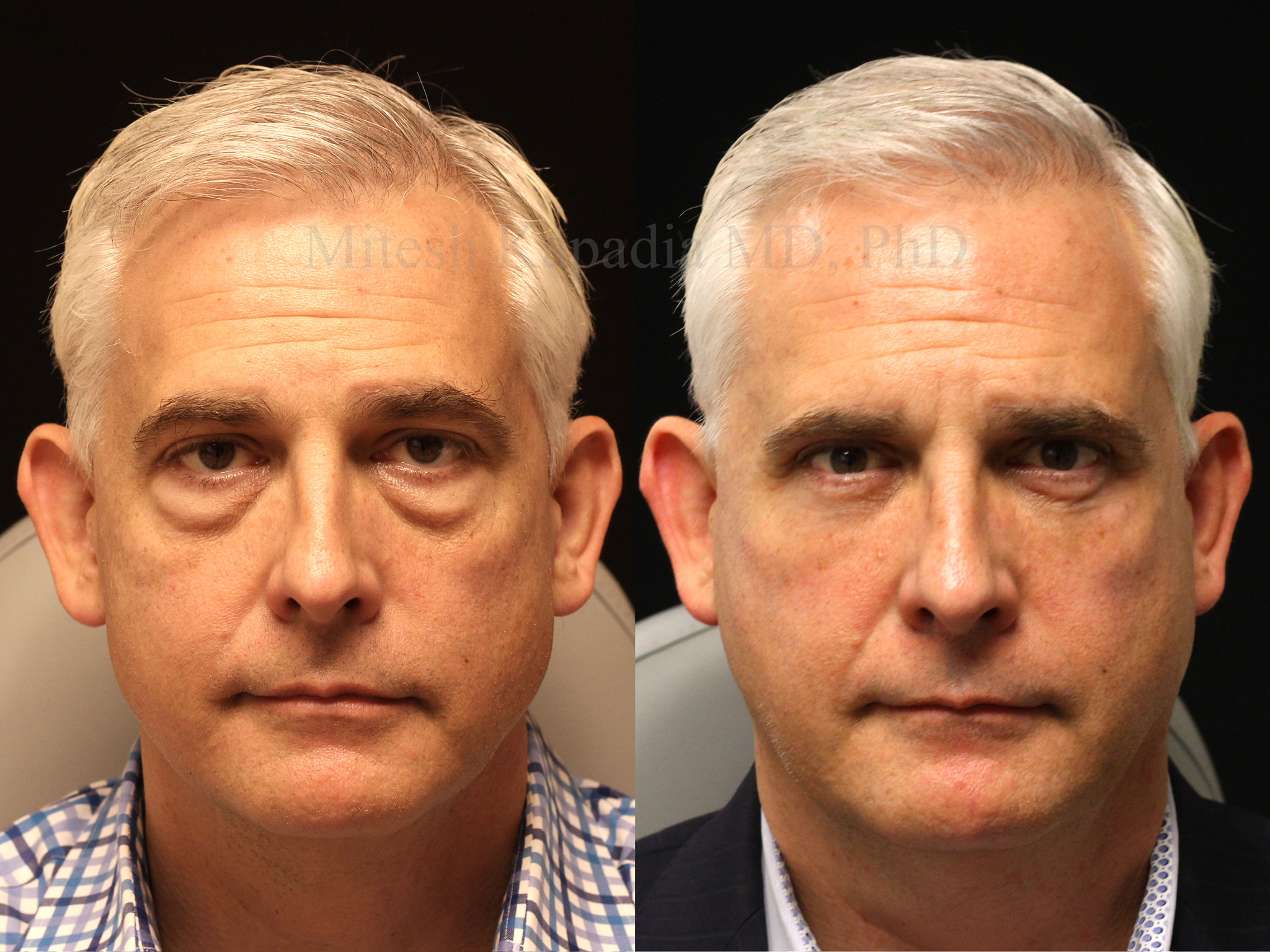Author
Mikayla Vosseller
Share

Dark circles under the eyes can represent a number of different problems, each of which is treated differently.
Excess Eyelid Fat
The space behind the eye, known as the orbit, contains a significant amount of fatty tissue. Orbital fat probably evolved to help cushion the eye from impact. However, as we get older, the support structures which keep the fat behind the eye weaken, and the fat moves forward into the eyelids. This results in a fullness to the lower eyelids which most people find aesthetically unpleasing. This fullness, commonly referred to as bags under the eyes, makes people look older and tired. The best treatment for this type of problem is usually removal of excess fat with a lower eyelid blepharoplasty procedure. Excess skin can be trimmed and tightened at the same time.
Tear trough deformity or hollowness at orbital rim
Dark circles under the eyes can be caused by a depression or hollowness in the lower eyelids. Patients who have this problem can usually feel the underlying bone when the area of hollowness is touched. Patients who have had an overly aggressive lower lid blepharoplasty in the past may have a similar problem.
The modern way to treat this hollowness is with injectable fillers such as Restylane or Juvederm. These treatments are less invasive than traditional surgery and typically last 9-12 months. Some surgeons advocate grafting or repositioning of fat to reduce hollows under the eyes, but Dr. Kapadia finds that this treatment is much less reliable than injection of fillers. In some patients, a lid tightening procedure known as canthoplasty can be performed to improve the lower eyelid contour.
Hyperpigmentation of eyelid skin
Dark circles under the eyes can sometimes be caused by excess pigmentation of the eyelid skin. Of the three causes of dark circles listed on this page, hyperpigmentation is actually the least common. Many patients feel that they have excess pigmentation, but this is often an illusion caused by shadows from excess eyelid fat or hollowness at the orbital rim.
A simple test to check for excess pigmentation can be performed while looking in a bedroom mirror with and without a flashlight. If the dark circles look bad in a mirror with overhead room lighting and then look better when a flashlight is used to illuminate the lower eyelids from below, the dark circles are caused by shadows and not by excess eyelid pigmentation. Bathroom mirrors usually have their own lighting (from the front) and won’t work well for this test. The same principle applies with flash photography. If the dark circles disappear when a photo is taken with a camera flash, there is no excess eyelid pigmentation.
Excess eyelid pigmentation, when present, can be treated with bleaching creams such as hydroquinone. However, the results of this type of treatment are almost always suboptimal. Eyelid pigmentation is an unfortunate problem which is very difficult to treat. Sometimes patients who have excess pigmentation may also have excess fat or hollowness in their lower eyelids and treating these conditions may help improve their overall appearance.






